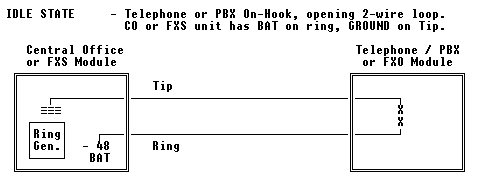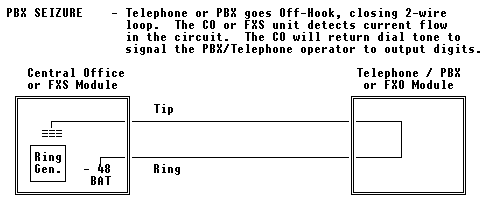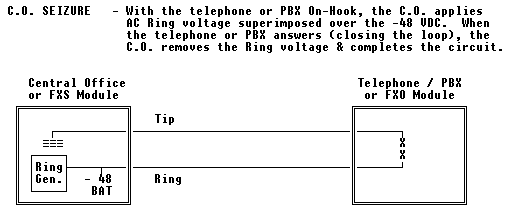| RETURN | Trunk Signaling |
Loop Start Signaling
The following diagrams depict Loop Start signaling states:



Advantages of Loop Start:
No need for accurate ground references between the Central Office/FXS and the PBX/Telephone.
Generally, TIP/RING wires may be reversed at the PBX/Telephone with no adverse impact on operations – (some older DTMF keypads may have problems with a T/R reversal, causing no output of tones).
Disadvantages of Loop Start:
There is no FAR-END Disconnect Supervision. When the remote handset/line hangs-up, there is no provision for the local CO/FXS to notify the PBX of the disconnection (Not a problem with a telephone).
There is poor “glare” resolution. “Glare” occurs when both the local end (PBX/Telephone) and the remote end (CO/FXS) attempt to access the circuit at the same time.
Unfortunately, with Loop Start, the PBX/Telephone is not informed of an inbound seizure until ringing is detected; The ring “cadence” is normally 2-seconds ON, 4-seconds OFF (U.S.).